Insects
Specialized in insect extermination for more than 30 years, our team can help you with pest management for all types of infestations. You will find on this page some of the insects for which we regularly intervene in the greater Montreal area and on the South Shore.
Can't find the insect in your home? No problem, just contact us and we will proceed with a free identification.
Click on one of the most common insects to get a description.
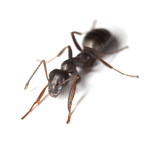
FOURMIS
Invaded by ants? It is necessary to recognize the species before considering an effective treatment. Read more here...
Description of the ants
There are several species of house ants in Quebec. They are social insects that are divided into different castes (workers, queens, males). On its head, there are well developed compound eyes. The mouth parts are of the crusher type. The antennae are very mobile and have a bent shape which is typical for these insects. Females have a more robust constitution than males.
The carpenter ant is distinguished by its large size. It is black in color.
The pharaoh ant is very small. Its coloration is dark.
The cobblestone ant measures 2.5 to 3 mm. It is either brown or black.
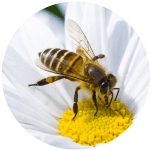
Bee
Regularly confused with the wasp, the bee is essential to our ecosystem. Read more here...
Description of the honey bee
The honey bee is an insect with a hairy body and small size. On its head there is a pair of eyes and a pair of antennas. It has two pairs of wings. Its abdomen ends with a sting. This insect lives in a well organized society composed of three castes: the queen, the workers and the drones.
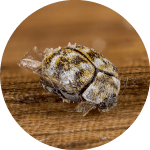
CARPET ANTHRENE
An insect that causes more damage as a larva than as an adult. Click to learn more.
Description of the carpet beetle
The carpet beetle undergoes a complete metamorphosis from egg to larva and from pupa to adult. The larvae are the most damaging to foodstuffs, fabrics, furniture, shoes, natural fiber carpets, etc... The female lays up to 90 eggs in the dust under and behind baseboards, in cracks and in air ducts - or in any other quiet, dark place.
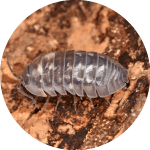
CLOPORTE
An insect that likes dark and humid places, often found in the basement or in bathrooms. See more...
Description of the woodlouse
Sowbugs are crustaceans with an oval-shaped body and can measure between 12 to 15 mm long on average. These live in damp and dark places. They are dull grayish, brownish or blackish in color. They do not have a carapace but an exoskeleton formed of plates. Two pairs of antennas are located on the head as well as poorly developed eyes.
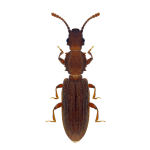
SERRATED BEETLE
Do you have small insects in your pantry? It could be the serrated beetle...
Description of the serrated beetle
In the adult stage, the serrated beetles are rusty-brown in color with an elongated body and are about 3 mm long. On each side of the thorax, they have six serrated projections.
They are of the beetle family, live in Quebec and feed on dry grains. They are mainly found in dry foods.
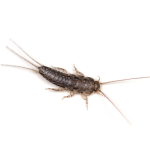
SILVERFISH
An insect that likes warm, moist places, silverfish is often a sign of a moisture problem.
Description of the silverfish
The silverfish is an insect covered with metallic gray scales. Shaped like a flattened carrot, it measures between 9 and 13 mm long. On the head there are compound eyes and two long antennae. At the end of the abdomen are three hairy filaments called cerci. It is found in humid and warm places.
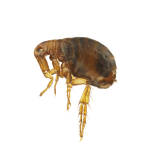
PUCE
During an infestation, we can see their presence with the naked eye in our house. See the description here.
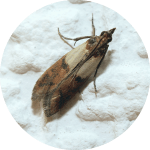
INDIAN MOTH
A mulch known to do damage in the larval stage especially found in heated areas.
Description of the Indian moth
The moth is a butterfly type of insect. In its adult stage, the moth can measure between 10 and 12 mm long and 2 cm wide. The forewings are reddish brown to dark gray. As for the larvae from which the butterflies are produced, they are egg-white and can be tinted green or pink depending on the food ingested. At the end of its growth, the moth measures 13 mm and is found in heated houses, near foodstuffs.
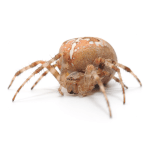
Spider
Often synonymous with fear, spiders found here in Quebec are rather harmless. Click to learn more.
Description of the insect
The spiders that make their home in our homes have eight legs. At the end of the abdomen are the spinnerets, from which come the silk threads that are used to make webs, shelters and bags containing the eggs. Spiders have many eyes (often eight) placed on their head. The oral part is composed of chelicerae, which end in a hook, and palps, or pedipalps.
The female usually lays her eggs in a silk bag that she hides in a shelter or carries with her. She can produce one or more of these bags, each containing a variable number of eggs. A few weeks after the laying, the eggs can hatch or wait for the following spring depending on the species.
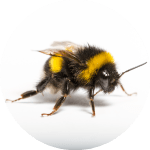
BOURDON
Be careful not to confuse it with a wasp or a bee, learn more here ....
Description of the drone
The bumblebee is a large flying insect with a hairy body. Of yellow and black color, it measures between 6 and 25 mm length. Its head has a pair of compound eyes, a pair of antennae, crusher-licker mouthparts and a long tongue. The thorax has two pairs of wings, three pairs of legs and, in females, it ends with a sting.
Like bees and wasps, the bumblebee lives in a well-organized society composed of three castes: the queen, the workers and the males.
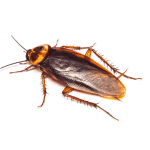
COCKROACHES, COCKROACHES
There are several types of cockroaches, but one variety causes most of the problems here in Quebec. See which one here.
Description of cockroaches
Better known as cockroaches, the common cockroaches of Quebec are insects that have an oval and flattened body shape varying from light brown to black and they can measure from 10 to 30 mm long.
The head is very mobile and partially hidden under the thorax. They have two mobile and flexible antennas and two large compound eyes. Its mouth parts are of the crusher type with a pair of robust mandibles. The thorax has three pairs of similar legs as well as two pairs of wings attached to the thorax and lying flat on the abdomen.
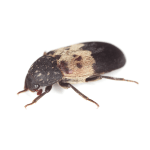
LARDER BEETLE
A widespread insect in Quebec that feeds mainly on animal products. Learn more...
Description of larder beetle
The larder beetle is widespread and common in Canada. Of the beetle family, it measures between 6 and 9 mm long and is dark brown or black. A band is marked towards the center with six black dots while other black spots are found near the part of the thorax that hides the head of the insect. The head has two club-shaped antennae and on the thorax are attached two pairs of wings. The male and the female are similar.
It feeds on insect remains, animal products such as furs, skins, feathers, processed and dried meats, cheeses, etc.
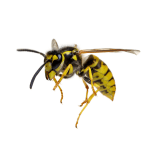
GUEST
A painful sting that makes it one of the most feared insects here in Quebec! Learn more about their way of life...
Description of the wasps
Social wasps are slender-bodied, hairless insects with a slender waist. The coloration is black and decorated with yellow. This insect can measure from 10 to 25 mm long. On the head are two large compound eyes and a pair of antennae. Their mouth parts are of the crusher-licker type. The thorax has two pairs of wings of which the posterior ones are the smallest and three pairs of legs.
Wasps live in an organized society and are divided into three castes: the queen, the workers and the males.
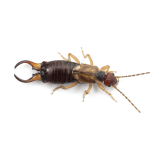
EAR DRILL
Very easy to recognize, this insect is present everywhere in Quebec. More information here.
Description of the earwig
The earwig is an insect that can measure between 1.5 and 2 cm long. The body is elongated, flattened and covered with a hard and shiny reddish brown cuticle (exoskeleton). The head has two strong and long claws and two antennas. This insect feeds on decaying organic matter, insect larvae, aphids, etc. The female lays from 50 to 70 eggs.
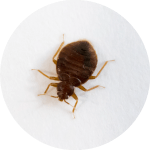
BEDBUG
A biting-sucking insect often associated (wrongly) with uncleanliness. It is imperative to intervene quickly! Read more...
Description of the bed bug
The bed bug is one of the biting-sucking insects that love human blood. It is active mainly at night.
Its oval and flattened body measures between 5 to 7 mm long when adult. Its head has antennae and mouth parts of the stinging-sucking type. Its coloring goes from white to brown but once fed with blood, it becomes reddish brown.
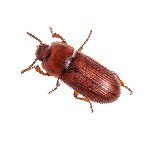
BROWN FLOUR TRIBOLIUM
In the beetle family, this insect attacks mainly stored grains. Description of the insect here.
Description of the brown tribolium of the flour
The brown flour beetle is an insect of the beetle family that feeds and grows on a variety of foods, but it mainly ravages stored grain and readily attacks whole wheat.
This insect can measure 4 mm long and flies as soon as the temperature reaches 25°C. It can lay between 300 and 400 eggs. The larvae are whitish in color with light brown stripes and can measure up to 8 mm.
